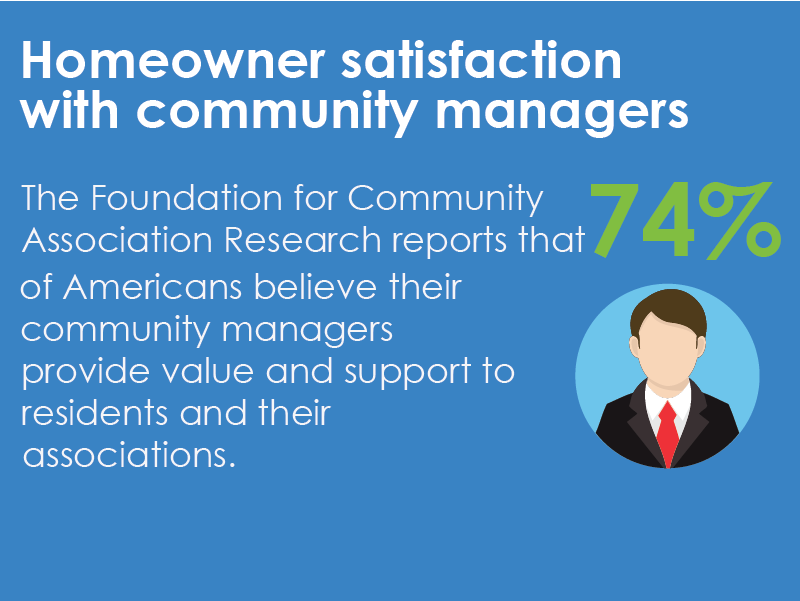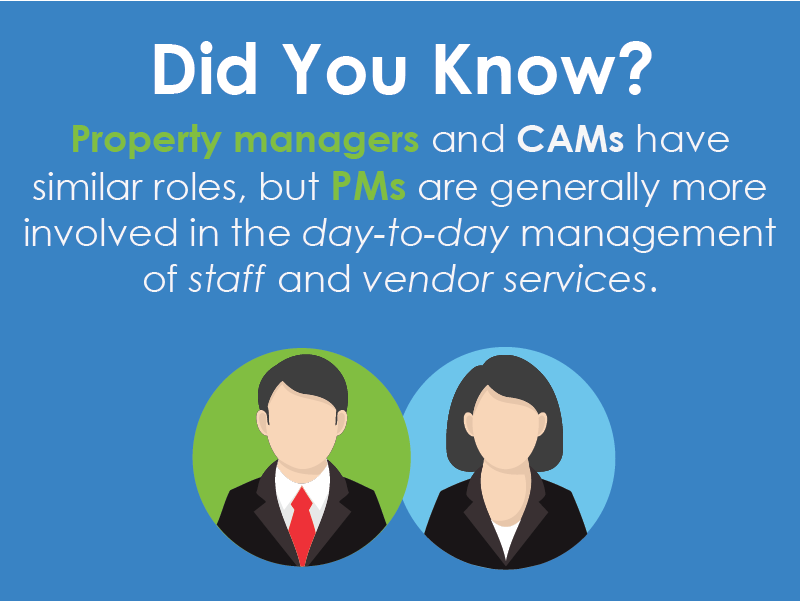Hello!
If you’re here, chances are pretty good that you’re thinking about community association software. We know this is a tough decision, there are so many things to consider, but we hope the information in this article will help you make a more informed decision.
Community association managers (CAMs) are kind of like multi-tasking superheroes. The precise responsibilities of a CAM vary depending on the needs of each community, but can include anything from hiring a landscaping company to drafting an annual budget. CAMs who want to gain a competitive advantage are turning to technology to help them operate more efficiently and effectively. Community association management software gives CAMs the tools and resources they need to phase out old and unproductive processes. In short, it helps them do more while reducing their workload.
Community association managers are more likely to use technology in their businesses than others in similar industries. Their adoption rates for property management software, resident portals, tools for online accounting and other features are high. That’s because CAMs often have to manage multiple teams and multiple portfolios. Technology allows them to collaborate with employees, no matter where they’re working from.
Before we dive into the top features and benefits of this technology, let’s take a quick look at the role of community association managers.
What is a community association manager?
Community association managers oversee the operations, management, finances, common spaces, and services of a residential community. A CAM is hired by the board of directors, or by a property management company.
A community association management position is a paid position with many professional responsibilities and obligations. CAMs are expected to help enforce governing documents, ensure the community is operating well, and make decisions that will serve the best interests of the development.
CAMs may work on-site and work in an office during business hours. However, they may also oversee a portfolio of communities and may not directly engage with owners on a regular basis.
CAMs do a lot, but many will not do the following:
- Address disputes between neighbours that do not impact the larger community
- Field repair requests
- Conduct showings for prospective buyers
- Collect rent
- Make independent decisions regarding budgets, vendors, or amendments to rules

The Foundation for Community Association Research reports that 74% of Americans believe their CAMs provide value and support to homeowners and to the associations they serve. Furthermore, most residents (85%) who have had direct contact with their CAMs have had a positive experience talking or working with them. Clearly, CAMs play an important role in keeping owners happy and properties running smoothly.
What’s the difference between a community association manager and a property manager?
Community association management and property management companies are similar in many ways. Neither company owns the properties or communities that they manage. Employees of these companies all look after communities and implement strategies to increase efficiencies. And they all support boards and residents who live in the development.
The main difference is that a property manager (PM) may be more involved in the day-to-day management of staff and regularly scheduled vendor services. Typically, physical maintenance of a condo or HOA, and direct interaction with residents are the PM’s domain. PMs may also be responsible for attracting qualified renters. This may not be the case with CAMs.

Why would a CAM need software?
CAMs are very busy people. Community association management software helps CAMs automate administrative tasks, systematically address tenant or building issues, and maintain regular communication with residents and board members. Using software, CAMs are able to reduce the time and resources they spend on recurring (and tedious) administrative and operational tasks so that they can focus on other things like achieving goals for their communities, and growing their businesses.
If you’re encountering the following issues time and time again, then it’s very possible that you and your communities could benefit from community association management software:
- You’re using Excel to document finances. It’s easy to make a mistake on Excel, and only you can access the spreadsheets
- Boards are taking notes by hand. You are organizing and storing piles of paper documents on their behalf
- Owners write checks to pay fees and assessments, and you have to make regular bank trips to deposit those checks
- You place vendor orders over the phone or through email. There’s no dedicated place for you to organize correspondence or receipts
- The board struggles to reach quorum
- Announcements/updates/notices/newsletters are being mailed to owners. The association must pay for print and mailing costs every time
- You rely on a bulletin board to notify owners about events or meetings
- Complaints from owners about bylaw violations are taking too long to resolve
- Owners are always asking for the CC&Rs, architectural change request forms, or copies of other forms
Good community association management software can assist with all of these things. Most software systems are designed to resolve the issues that prohibit effective communication, operations, and record-keeping. Many platforms will also provide accounting and security solutions for an additional cost, or integrate with the software system that you already use.
Almost any CAM can benefit from management software, but it tends to make a more significant difference for managers that care for mid-sized and large HOA and condo communities. That’s simply because they have more people to look after and more issues to resolve.
It’s also easier to communicate with owners using digital software. It only takes a few minutes to send a notice to an entire HOA. Managers who work for numerous properties will appreciate a good cloud-based platform because they can gain a better understanding of how each community is performing without having to be there physically.
More CAMs are embracing technology
A 2020 property management industry report found that of those who used technology, 85% of CAMs used property management software, 78% used electronic payments, and 77% used resident/owner portals so that owners could make payments and submit maintenance requests.
Interestingly, boards also want their CAMs to use this technology. Between 70% and 90% of respondents expressed a desire for managers to handle processes, including accounting and budgeting, board communications, and violations tracking, digitally.
Software removes barriers and facilitates more seamless processes for everyone. It is definitely a tool that can help managers gain a competitive edge.
Features to look for
No matter how big or small your company is, every CAM looking to purchase software wants to invest in an outstanding product that offers value for the price. Money matters, but the cost of the software shouldn’t be the only determining factor. Consider the practicality of the software, its value, whether customer support is available, and if the software can grow with you.
Each software system solution offers something unique, but the top contenders will have features that help to automate or improve:
- Communications
- Record-keeping
- Resident capabilities
- Maintenance
- Essential operations
Most managers and boards will also want to have access to these features and capabilities:
Communications/announcements
Almost every community will cite communication as their biggest issue. If the right people don’t get the correct information in a timely manner, things either don’t get done, or they don’t get done properly. Online software can drastically improve communication between boards, owners and CAMs.
Community association management software gives managers the ability to streamline communications, and reach owners in a few different ways. Messages and updates can be sent to all owners, or select individuals via email, text messages or automated voice messages. Having these options allows you to reach owners who are not comfortable online, as well as those who are always checking their email. You can continue to print out notices for people who request to receive paper documents as well.
Using digital communications is not only more efficient, the association will see a noticeable decrease in print and mailing costs. By replacing paper documents with digital messages, you save your communities money while improving the frequency and quality of communications.
Online payments
This is becoming an essential tool for associations. According to the most recent Statistical Review for Community Association Data, $96 billion of assessments were collected from U.S. homeowners. Assessments are essential to the health and wellbeing of any association, and that money is used for things such as paying CAMs and other management services, utilities, security, insurance, maintenance costs and capital improvement projects. Of that $96 billion, $27.4 billion was added to association reserve funds for major or unexpected repairs, replacements, and enhancements of common property.
Money is a key aspect of association management. The better you can manage it, the more likely clients are to refer you to friends or colleagues. However, collecting and processing payments can be a time-consuming and inefficient ritual, especially if you care for large communities.
With a user-friendly online payments feature, you can make this entire process easier for everyone. Owners have the ability to authorize automatic payments for monthly or regular fees, and may use credit cards, pre-authorized debit, direct withdrawal, electronic funds transfer or ACH payment to cover their fees. As a CAM, you don’t have to chase people down for payments or transport cash or checks to the bank. Payments are automatically sent to the association’s bank account, and transactions are recorded through the software so that owners and management may review and confirm transactions.
Resident/owner portal
When owners can do more for themselves, CAMs get more time to attend to complex requests or issues. Having an owner portal available allows owners to be more independent, and boosts owner satisfaction, too. Features available through the owner portal may include announcements, online payments, contact information for management, amenity booking, a place for them to add and update personal information, work orders, and a discussion forum.
Virtual meeting
If your community has ever struggled to reach quorum, it might be time to try virtual meetings. This feature has become increasingly popular since the pandemic hit, and it’s definitely here to stay. Associations may have been skeptical about hosting annual meetings online, but those that have tried them are always impressed with how easy and productive they are.
Owners can cast their votes before or during the meeting, and associations are much more likely to reach quorum since it’s easier for owners to participate. CAMs and boards also appreciate that virtual meetings can be self-moderated, or moderated by someone from the software company.
Purchase orders
Are you done with filling out the paperwork that is required for setting up purchase orders? With a streamlined purchase order solution, you can set up and ad new suppliers in minutes.
You can easily rate suppliers, which lets you quickly identify your favourite suppliers when you want to make a new order.
Enjoy complete oversight over purchase order procedures. If two or more parties are required to provide approval before a purchase order is made, they will receive a notification and have the option to approve, decline or ask more questions regarding the purchase order.
Storage for records and documents
Record-keeping is another important part of community management. But finding a place for all of that paper is challenging. Some CAMs have decided to switch paper records for digital ones instead. That’s a great strategy because it’s much easier to edit, update, share and save records when they are digital.
Community association management software works to keep those important records safe and secure. Setting permission levels on specific folders ensures only the intended parties can view those documents. So, you can have folders for boards, folders for committee members, and folders for every member of the association. Everything your community needs is stored in one centralized location, and since cloud-based software allows you to access your documents from any device, you can work from any location.
Scalability
Scalability is a capability you should expect from your software. Your company will grow, and when that happens, you’ll need software that can grow with you. Make sure it can support multiple properties, and that updates and additions are made to the software on a regular basis. If you can’t see yourself using it 5 years from now, then it’s probably worth looking for a software system that will serve you in the long run.
Human support
Software is a wonderful tool, and it can do a lot for you when it comes to managing a property. But no matter how good the software is, it won’t be useful to you if you don’t understand how to use it. It’s normal to have questions about any software system, and on occasion, something might go wrong. If that happens, it’s good to know there will be a real person who you can call for support. Condo Control has a support team available to assist management and residents. Just give us a call and we’ll help clear up any issues you’re experiencing.
Ability to integrate with other software
Every community association management software system is different, meaning each program will have unique strengths and weaknesses. Some programs do accounting very well, while others excel in record-keeping and communications. Though it is not essential, it does make life easier if you have the option to integrate software systems. This way, you can enjoy the best features from two different platforms without having to log in to each program separately.
Conclusion
Investing in a robust, user-friendly community association management software system is beneficial to virtually any CAM. These software solutions can help you reach your goals more quickly while saving your communities money and connecting homeowners. CAM software will help improve communications, simplify or automate repetitive tasks, and streamline day-to-day operations. Different programs will have different qualities, but their core objectives are the same. Before you decide on a program, make sure that it has the features you need to help tackle your specific challenges.


